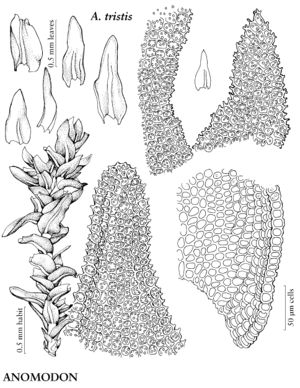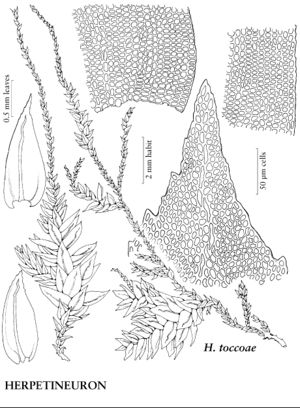Anomodontaceae
Plants small to large, in dense or loose mats, glaucous, green, brown, or yellowish-brown, dull. Stems creeping, sparsely to profusely branched, irregularly pinnate; paraphyllia absent. Stem and branch leaves differentiated. Stem-leaves scalelike, minute; apex acute-acuminate to rounded; costa single, long, ending below apex, thick, usually pellucid, or double and short; laminal cells short. Branch leaves with costa single, ending sharply at or near apex, pellucid. Sexual condition dioicous. Seta dark to light reddish or brown, flexuose. Capsule erect, exserted; operculum conic to obliquely short-rostrate; exostome whitish yellow to pale-brown, often striolate at base and papillose.
Distribution
North America, Mexico, West Indies, Central America, South America, Europe, e Asia, Africa, Pacific Islands, Australia, circumboreal areas
Discussion
Genera 4, species ca. 20 (2 genera, 9 species in the flora).
Selected References
None.
Lower Taxa
Illustrations
| Family ⠉ | Taxon | Illustrator ⠉ | |
|---|---|---|---|
 | Anomodontaceae | Anomodon tristis | Patricia M. Eckel |
 | Anomodontaceae | Herpetineuron toccoae | Patricia M. Eckel |
Key
| 1 | Branch leaves broadly ovate to lanceolate, ± abruptly narrowed mid leaf; laminal cells with papillae 1 or many. | Anomodon |
| 1 | Branch leaves ovate-lanceolate, gradually tapered from base to apex; laminal cells smooth. | Herpetineuron |